How to archive SharePoint documents, lists, and libraries
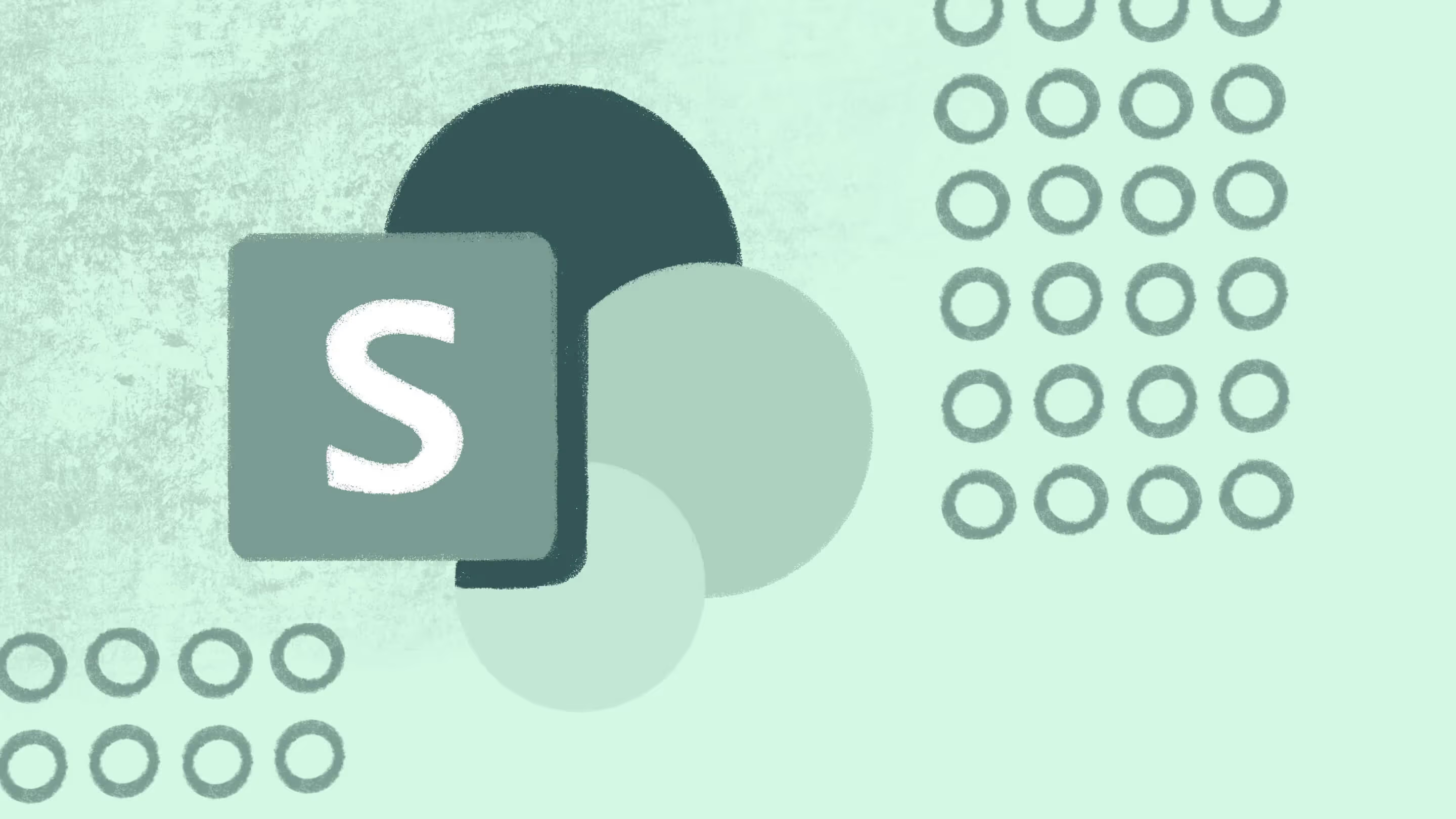
Table of contents
Your SharePoint environment is fluid. Every minute, there's more content being added. If you don't put a good records management strategy in place and leave unnecessary content unarchived, you might have trouble down the line. If you're thinking of creating a SharePoint archive, ShareGate simplifies the whole process, providing advanced capabilities to ensure a healthy SharePoint environment for all users.

When organizations scale, the importance of good records management becomes more evident.
Clutter. A lack of storage space. Inconvenience when searching for something specific and not finding it. These problems, and much more, can come up if you're not archiving your SharePoint content on time.
And even if you haven't faced any of these issues, they will come up. And if you don't handle it with care, taking a day to sit down and clean up content will cause a lot of frustration.
This is why managing SharePoint content on time makes for good records management. A cleaned-up environment helps effective collaboration and, generally, makes everyone's lives a lot easier.
Here, we'll break down how to archive content (document libraries, list items, etc.) on SharePoint. We'll also show you some options to make the process a lot easier compared to the traditional archiving route. Let's get to it!
What's the purpose of creating a SharePoint archive?
First, let's dive deeper into why a SharePoint archive is necessary.
Reduce clutter
Clutter is at the heart of the frustration you feel when you can't find what you're looking for.
There are a lot of reasons for clutter to come up in your SharePoint environment. Maybe users are creating unnecessary teams and associated resources without realizing it. Maybe users are creating site columns and site content types without classifying them with names or related descriptions.
Your SharePoint environment is fluid, but data left unchecked and unmanaged can even lead to security concerns in worst-case scenarios. That's why archiving content is a good cleaning practice for your SharePoint environment.
Freeing up space
Why was this created? Why is it still here? Who should we check with before removing this? Those are the kinds of questions you should never ask about your SharePoint environment, since inactive resources can stir up a lot of confusion down the line.
To avoid those questions, start archiving old content to free up space. Maintaining a SharePoint archive is a great way to keep storage space optimized for what's important and is actually being used by your organization.
Improve SharePoint search
A lack of content management can create unforeseen issues for users trying to find what they're looking for. If SharePoint search stops working, your team will simply be unable to finish work.
Issues with SharePoint Search can arise in multiple ways. Maybe nothing is showing up because of an indexing issue at the back end. Or, even worse, users are searching for something and getting confused by the multiple results they're getting. Why?
Probably, it's because someone forgot to archive an unnecessary folder, page, list, document library, etc. To avoid this, ensure you archive inactive files at the right time.
How do I back up SharePoint Online?

Archiving is the way to go. But before that, start by backing up your SharePoint Online content. There are multiple ways you can do it in the cloud. Let's see the most common ones:
Using OneDrive
Your Microsoft 365 environment has everything you need to keep your data backed up—and here we're talking about OneDrive. There are a few excellent reasons why you should use it to back up SharePoint content.
First, everything remains on the cloud. Second, everything is happening within your Microsoft 365 environment. Both SharePoint and OneDrive are built to work in harmony. This makes it easy to move data around and restore it later on.
And most importantly, there's a cost-saving benefit to using OneDrive. It can cost more to recover data from within SharePoint than if it's already present in OneDrive.
Auto-archiving using version control
Versioning is a native SharePoint method for record management you can use to maintain backups. By enabling version control from Library Settings, SharePoint automatically starts creating a record of all changes made to each document. Once enabled, you can view all previous versions of the file, which are being auto-archived by SharePoint.
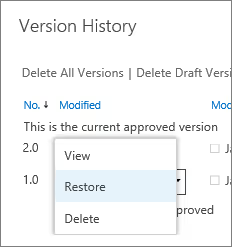
Using retention policies
Enabling retention settings within your SharePoint Online environment makes it easy to back up important content. You can enable retention policies to automatically delete files that are no longer relevant, leaving room for important information.
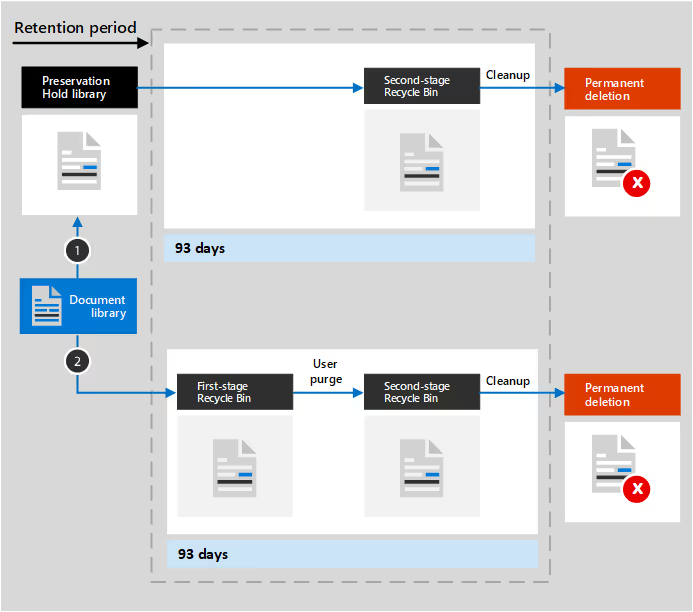
The way retention works in SharePoint enables you to move the remaining critical data in a specific document library automatically. For backup purposes, you can later access all stored data through retention settings.
Archiving SharePoint using an archive library
In SharePoint Online, you can back up important data in an archive library. You can route documents once they're no longer in active use in a 'Record center' that serves as the archive library. Alternatively, you can enable an active site for in-place records management if there's active collaboration going on.
How can I archive documents in SharePoint?

Archiving SharePoint documents using out-of-the-box features
Identifying unused content with out-of-the-box features requires considerable manual effort. The process involves:
- Going through each SharePoint site and viewing site contents.
- Checking when the content was last modified to identify whether it's 'old' or still currently in use. If the last modified date is recent, you might want to skip archiving it or make a note to check with all relevant stakeholders.
- If it is old and doesn't seem to be in use, checking with the site owner to verify that it can be archived without disrupting anyone's work.
- Repeating the process for each site.
You can create and run a custom script to automate the process by working with developers. However, while running custom scripts to list all SharePoint sites, lists, and libraries has been done before, customizing them according to your needs can be a hassle.
Using workflows
Using a workflow solution such as Microsoft Power Automate is an effective way to archive SharePoint content. It's built specifically to cut out the manual effort involved, such as with the out-of-the-box feature.
However, it'll take you a considerable amount of time to set it up and configure it manually. Factors like determining when to move content, setting a source and destination for archived documents, copying setup for all libraries/sites, etc, should be carefully considered.
Easily archive SharePoint content using ShareGate
Archiving SharePoint content using ShareGate has a lot of benefits. ShareGate takes all limitations that IT admins face into consideration and provides added features to automate and simplify the entire archiving process.
For example, with ShareGate, you can archive the entire SharePoint hierarchy, list attachments, documents shared on Planner or Yammer, files and folders in private Teams channels, etc. None of this is available in native Microsoft capabilities.
Other benefits are leveraging automation and having the flexibility to decide who can archive, what can be archived, where you can archive from, and more. Check out ShareGate's archiving FAQ section, where all features compared to Microsoft are highlighted in detail.
What else should I do to maintain my SharePoint environment?
There are a couple of important factors to consider besides maintaining a clean SharePoint environment. Here's what you should keep in mind:
- Permissions management: Ensure you stay on top of permissions management in SharePoint. Knowing who can access what is essential to ensure collaboration while maintaining privacy and security.
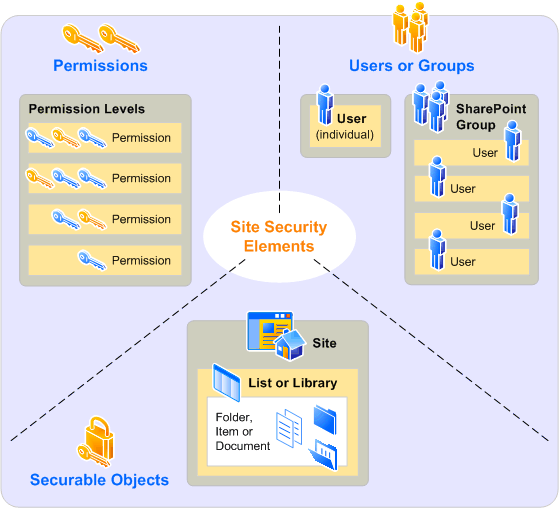
- External sharing reviews: End users collaborating with external users by sharing content is something you should expect. However, good SharePoint management ensures internal users can only share content they should be sharing.
This means maintaining the right external sharing settings across your environment so unauthorized users can't share or access sensitive data.
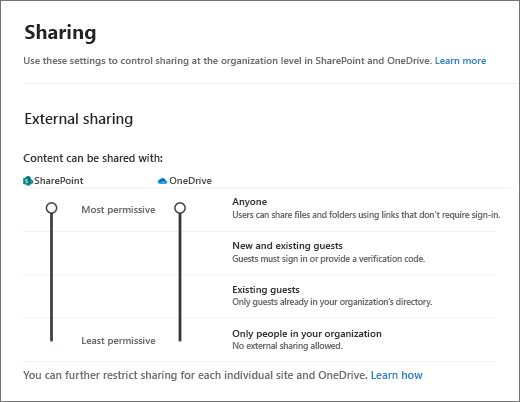
- Checked out docs reports: Ensure you're aware of all documents that are currently checked out to ensure you have oversight of documents being edited. You can do this by creating reports that track all checked-in/checked-out documents.
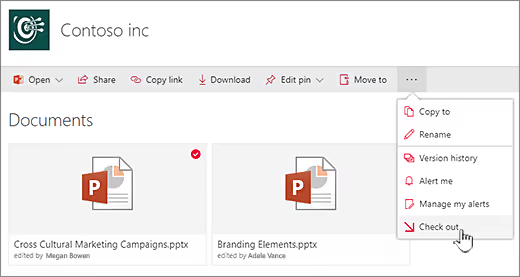
Wondering how to manage all of this manually? Well, you got lucky. ShareGate automates the entire SharePoint management process.

Built-in features that help with complete oversight include permissions reports, external user reports, checked-out docs reports, unused site reports, orphaned user reports, and much more!
SharePoint site collection administration, simplified
Oversight of your SharePoint environment is critical. And ideally, it should be easy. You shouldn't be in reactive mode, using manual processes to organize and manage SharePoint content all the time.

ShareGate's auditing tool simplifies administration and oversight. Automated reports for site collection, unused sites, permissions management, and much more is not only possible but customizable according to your specific needs.
Sounds exciting? Try the SharePoint auditing tool for free today and see what simplified administration looks like!
.jpg)


.svg)
.avif)
%20(1).avif)










.avif)

.jpg)


.png)

